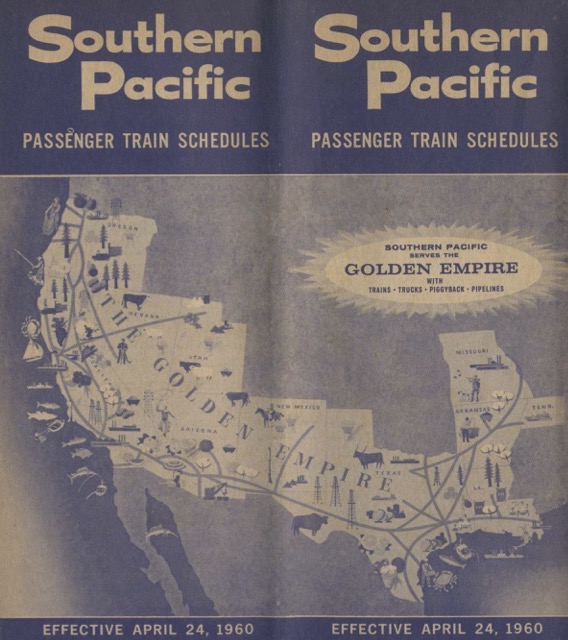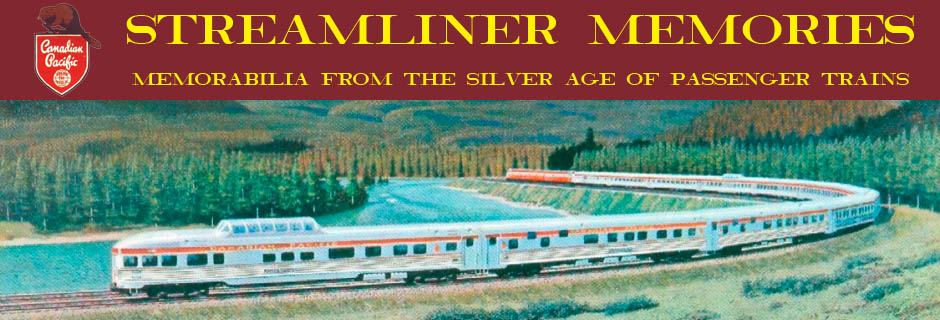This timetable is arranged similarly to yesterday’s, including two full-page ads that promote both SP passenger and freight services. The full-page ad on page 11 promotes the Coast route and wide-door boxcars, saying that SP has the largest fleet of such boxcars in the West.
 Click image to download a 14.1-MB PDF of this 32-page timetable.
Click image to download a 14.1-MB PDF of this 32-page timetable.
The front cover ad shows an artists’ image of the Sunset Limited being pulled across a Louisiana viaduct by an Alco PA that is at exactly the same oblique angle as yesterday’s. One difference is that yesterday’s PA was lettered “Southern Pacific” in a sans serif typeface much like Union Pacific’s city font while today’s is lettered in a more traditional railroad Roman font. (The links are to fonts made by my friend Benn Coifman, which are the fonts I use in the mastheads to this blog.)

By this time some serious belt tightening was underway. The Starlight had come off in 1957, and the Argonaut had been cut back to a New Orleans – Houston run as well, which meant that the Sunset inherited its head end cars which consequently resulted in a lengthened schedule. The Shasta Daylight was running tri-weekly during off-peak times, and the Oakland section of the Lark was gone as well. The West Coast would be gone by December of 1960.
According to Fred Frailey’s “Twilight of the Great Trains,” these cutbacks (along with the discontinuance of the Overland in 1962) allowed SP to at least cover its direct costs on passenger service from 1962 to 1966. That same year seemed to have been a portent of the bottom dropping out for most railroads, with the removal of post office contracts the following year being the final nail in the coffin.